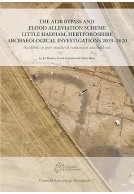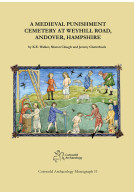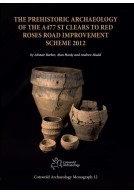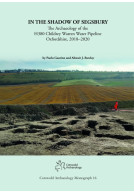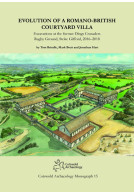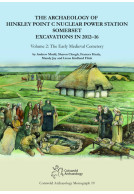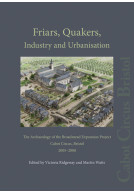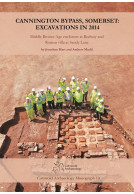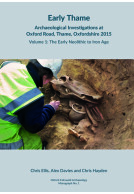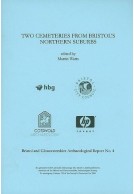On the Edge, Above the Vale (Paperback)
Collection Management Facility, Science and Innovation Park, Swindon, Wiltshire: archaeological excavations 2018–2020
Imprint: Cotswold Archaeology
Series: Cotswold Archaeology Monograph
Pages: 224
ISBN: 9781917215022
Published: 13th March 2025
Script Academic & Professional
Series: Cotswold Archaeology Monograph
Pages: 224
ISBN: 9781917215022
Published: 13th March 2025
Script Academic & Professional
Usually available in 6-8 weeks.
You'll be £25.00 closer to your next £10.00 credit when you purchase On the Edge, Above the Vale. What's this?
+£4.99 UK Delivery or free UK delivery if order is over £40
(click here for international delivery rates)
Order within the next 6 hours to get your order processed the next working day!
Need a currency converter? Check XE.com for live rates
(click here for international delivery rates)
Order within the next 6 hours to get your order processed the next working day!
Need a currency converter? Check XE.com for live rates
Archaeological investigations by Cotswold Archaeology on behalf of the Science Museum Group ahead of the construction of the Collection Management Facility, Science and Innovation Park at the former site of RAF Wroughton, a Royal Airforce airfield that opened in 1940, produced evidence for a double pit alignment, an open settlement of Iron Age date, and a series of Roman enclosures and a small Late Roman cemetery. The site lies on a raised chalkland plateau, part of the North Wessex Downs, and overlooks Swindon, the Thames Valley and the Cotswolds to the north with the higher chalk downs, the Ridgeway and Barbury Castle just to the south.
The earliest evidence for human activity included an isolated Beaker pit and a small number of worked flints of Neolithic and Bronze Age date. However, the first substantial evidence for activity on the plateau was a pair of converging pit alignments that crossed the north western part of the site. This arrangement may have been designed to funnel people and animals up onto the chalk plateau. The more eastern alignment may have acted, at least initially, as a boundary to an otherwise extensive open settlement made up of roundhouses and pits that was only partially revealed by the excavation. The pit alignments are very poorly dated but their spatial location with the settlement of Iron Age date indicates they are certainly of preIron Age or earliest Iron Age date. The Iron Age settlement was made up of at least 11 roundhouses, a Cshaped ditched enclosure, over 150 pits, and a series of inhumation burials some of which were made in flat graves and others that were made within pits and more rarely a ditch. All the prehistoric burials were radiocarbon dated, which indicated that burial took place during the Early to Middle Iron Age. Some of the earliest burials appeared to have been bound and therefore possibly stored prior to burial within the settlement – suggesting that they were already old and had died sometime before the foundation of the settlement. In addition, to the occurrence of the presence of human remains some of the pits contained more unusual deposits, combinations of material, charcoal or burned deposits, notable dumps of chalk or sarsen. Amongst the material from the pits were groups of associated animal bone, some articulated, animal skulls, various objects including some of more unusual type and more mundane settlement refuse. The open settlement was replaced by a system of ditches and enclosures in the Late Iron Age and Early Roman period and this reorganisation of the immediate landscape also saw the construction of a droveway where the much earlier pit alignments had once converged and reestablished this area of the site as a routeway onto the plateau. In contrast, by the Late Roman period the site was mostly used for burial with the creation of a small Roman rural cemetery in an area between two large enclosures of earlier Roman date. The Cshaped enclosure of Iron Age date was also reused as a focus for more isolated burial and to house an oven. After the Roman period, the use of this site was abandoned as a place of settlement and burial and primarily only used for cultivation until the construction of the airfield during the Second World War.
Other titles in the series...
Other titles in Cotswold Archaeology...









